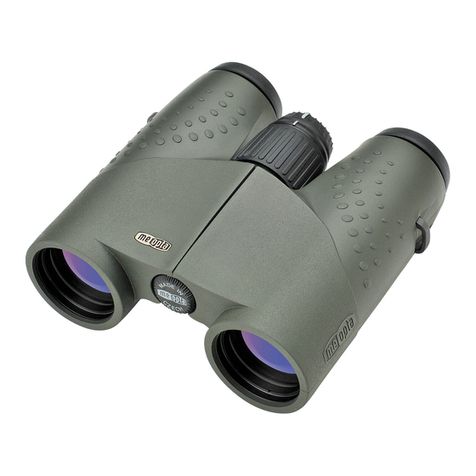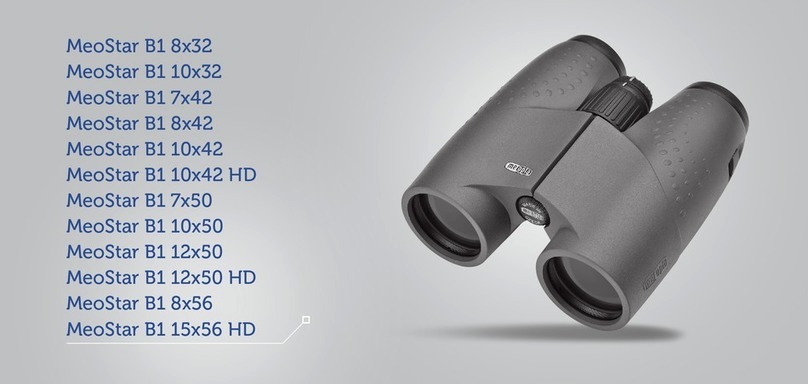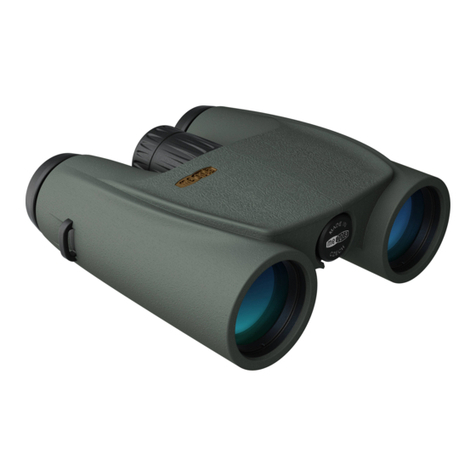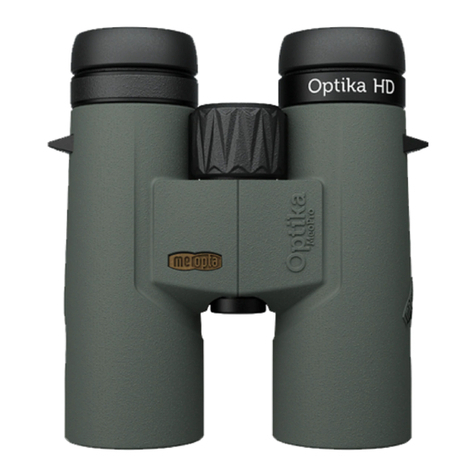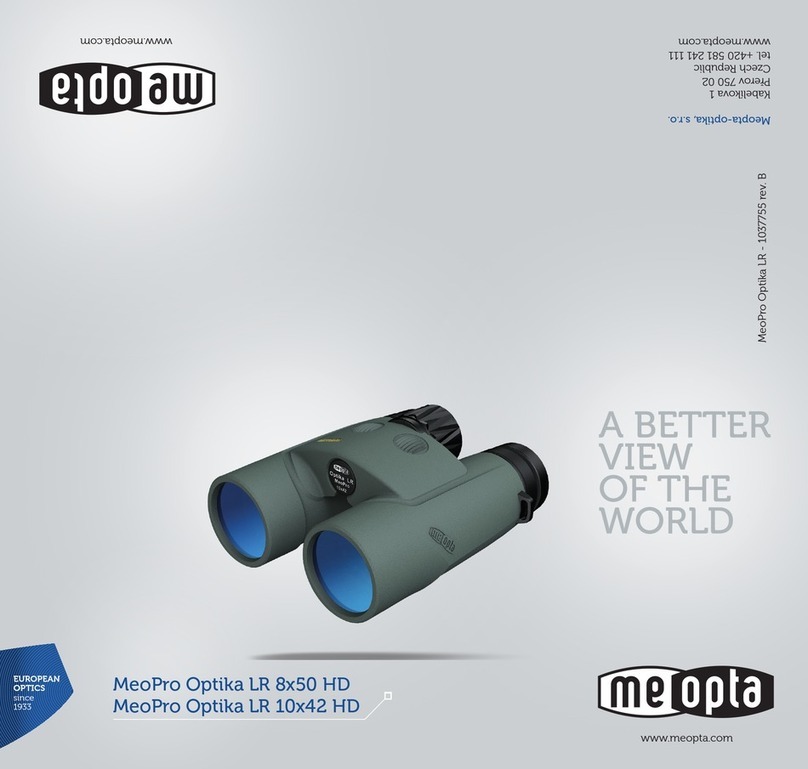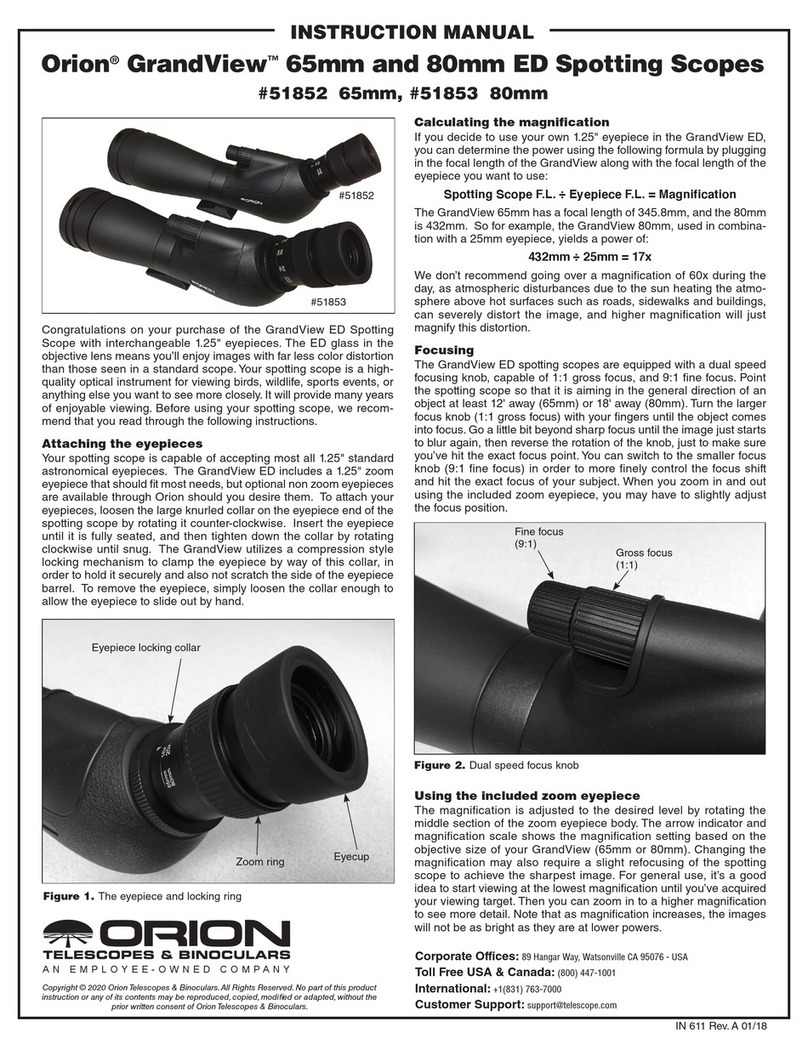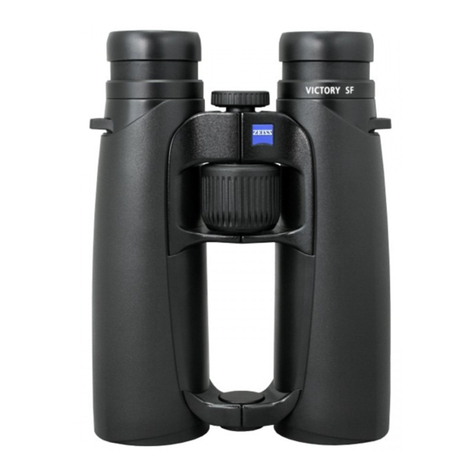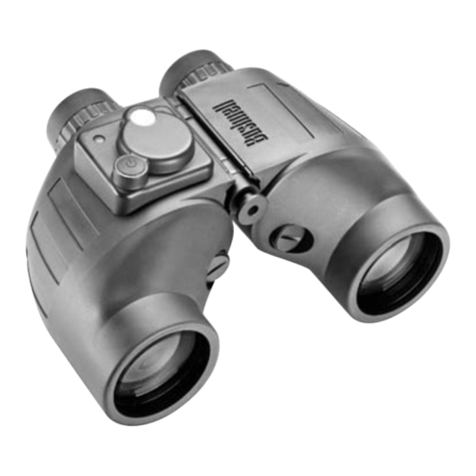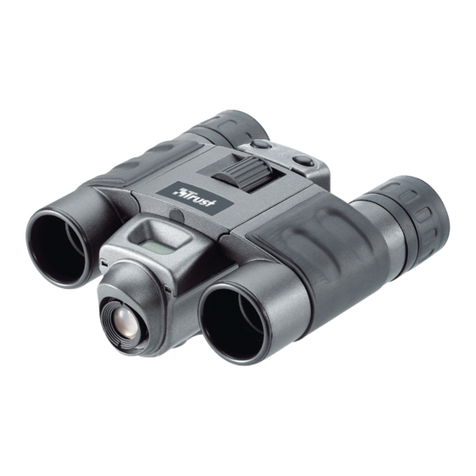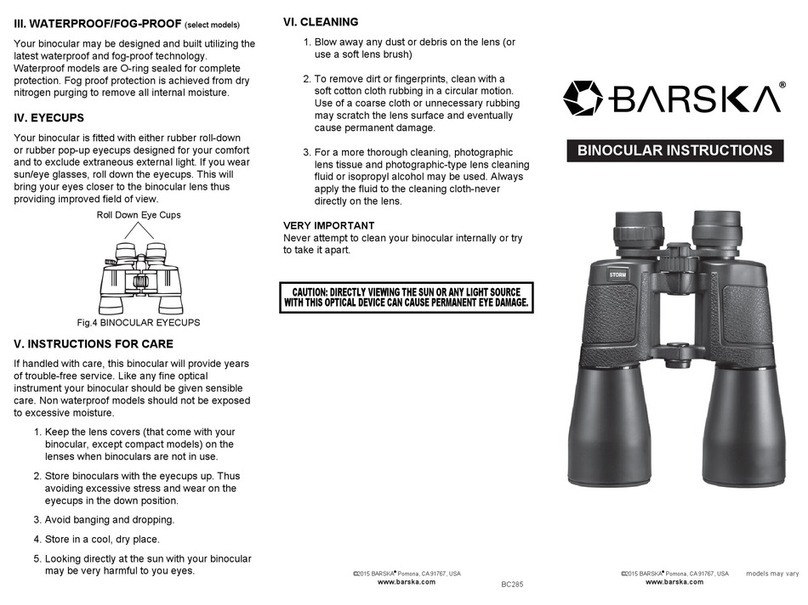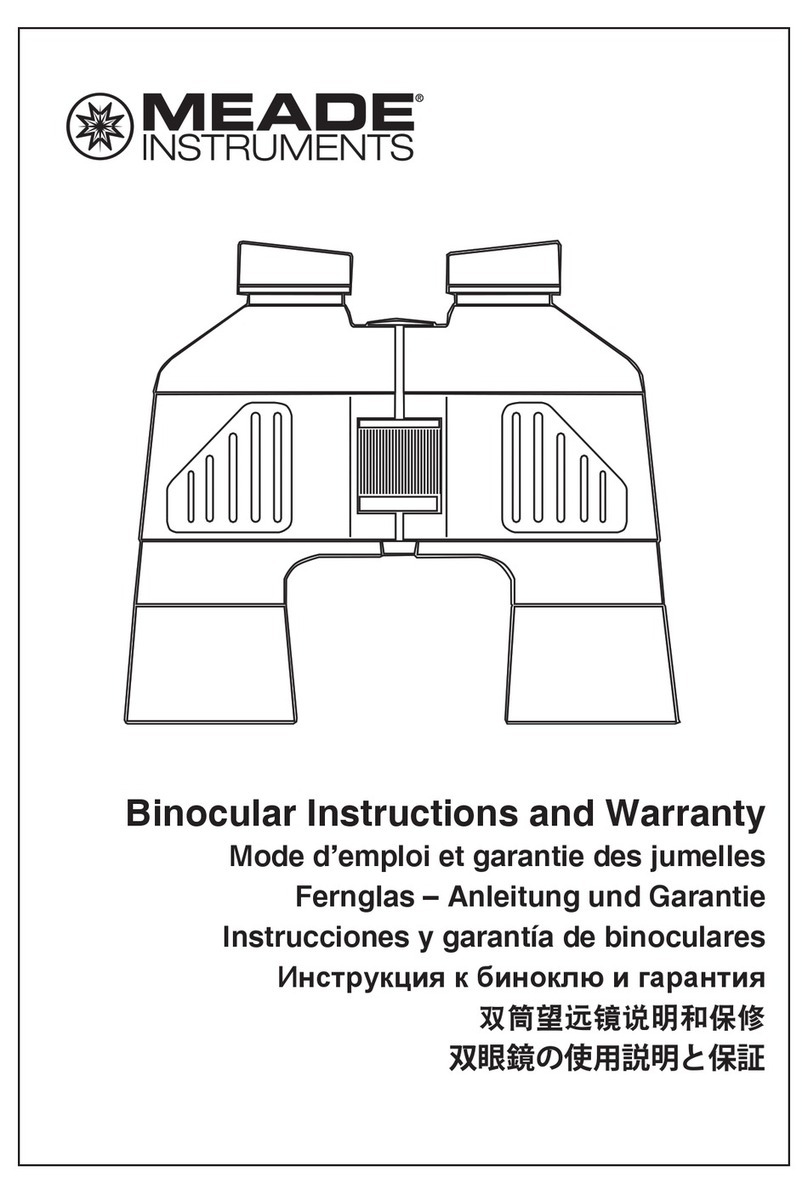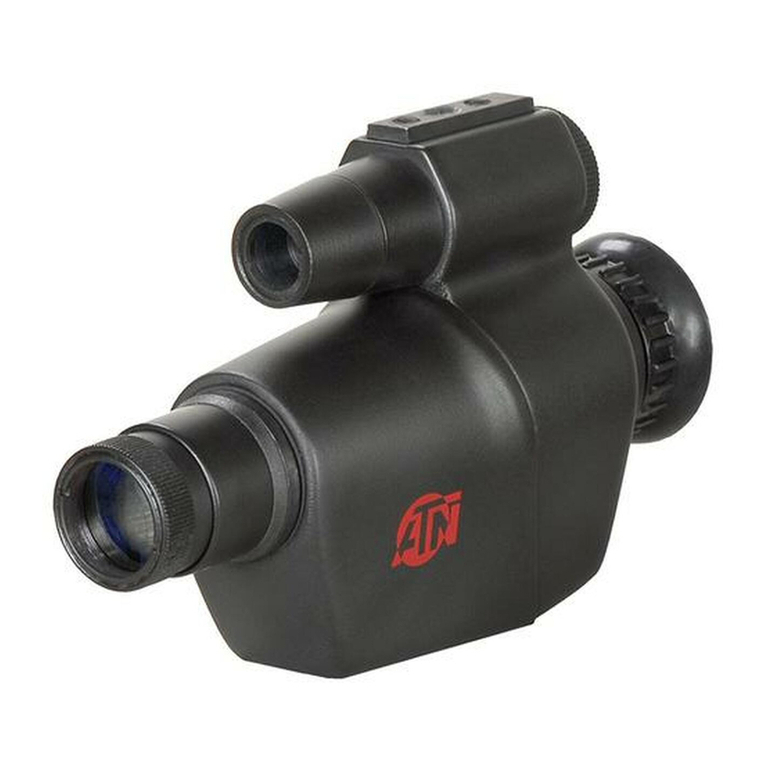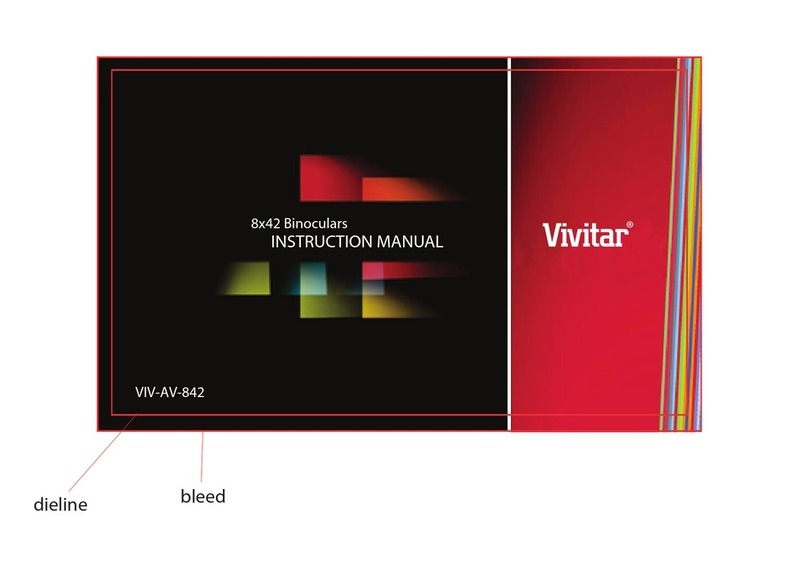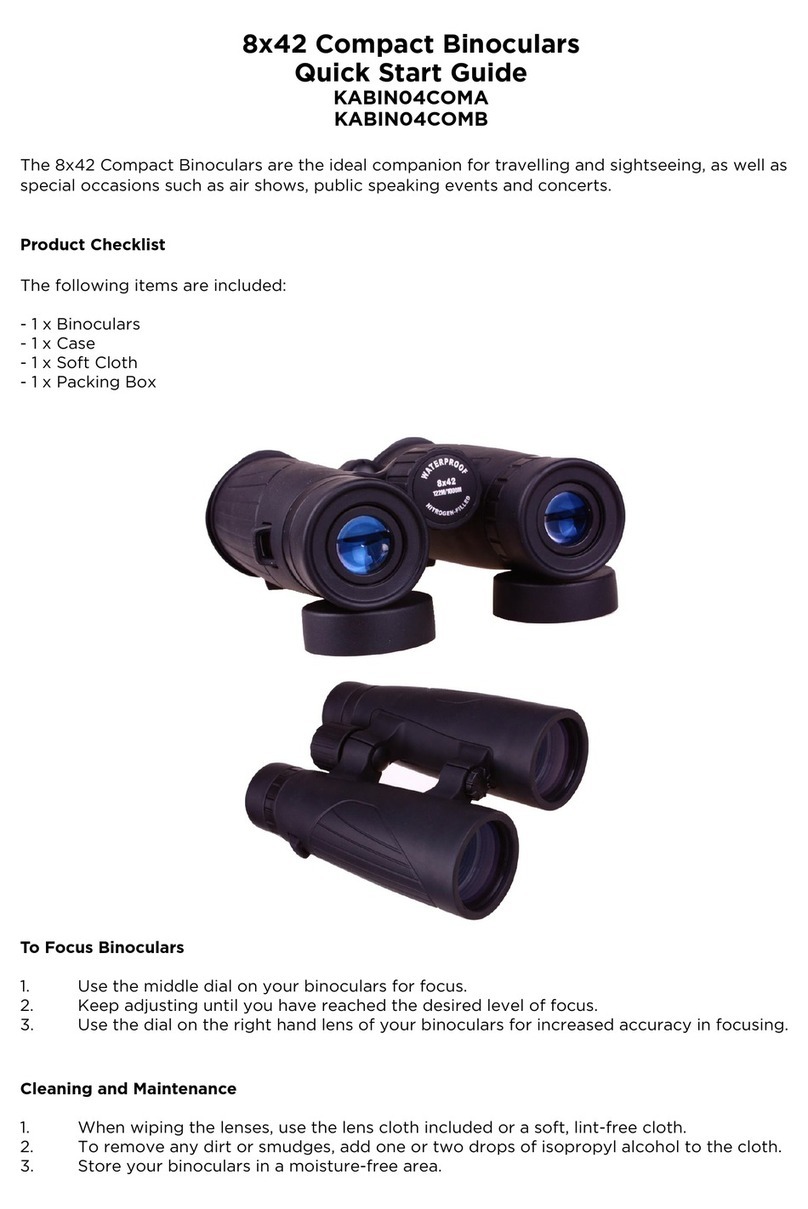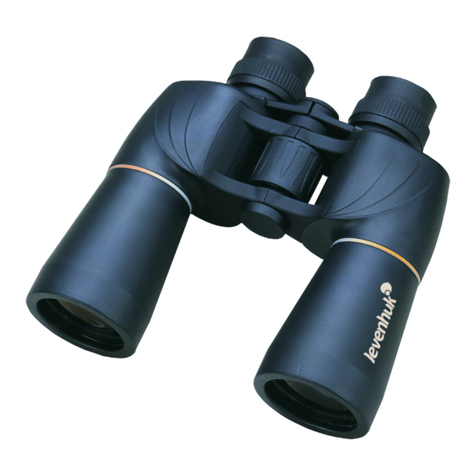Meopta Meostar B1 User manual

Meopta Meostar B1 BINOKULÁRNÍ DALEKOHLED
BINOCULAR
FERNGLAS
JUMELLES BINOCULAIRES
CANNOCCHIALE BINOCULARE
BINOCULAR
БИНОКЛЬ
QUALITY SINCE 1933

2
1
8
7
9
2
46
3
5

3
pogumované těleso dalekohledu (levá a pravá větev)
Rubber-coated binocular body (left- and right-hand oculars)
gummierter Fernglaskörper (linkes und rechtes Okular)
corps caoutchouté des jumelles (branches gauche et droite)
corpo gommato del binocolo (tubo destro e sinistro)
cuerpo del anteojos revestido de goma (rama izquierda y derecha)
обрезиненный корпус бинокля (левое и правое плечо)
objektivová část dalekohledu
Binocular lens part
Objektivteil des Fernglases
la partie objectif des jumelles
obiettivo del binocolo
parte de objetivo del anteojos
объектив бинокля
okulárová část dalekohledu s výsuvnými očnicemi
Binocular ocular part with disengaging eye sockets
Okularteil des Fernglases mit ausschiebbaren Augenmuscheln
la partie oculaire des jumelles avec lentilles oculaires sorties
oculare del binocolo con conchiglie estraibili
parte de ocular del anteojos con oculares alargables
окулярная часть бинокля с выдвижными оправами окуляра
točítka centrálního ostření - ostřící točítko
Central focusing knobs – focusing knob
Rad der zentralen Scharfeinstellung - Fokussierrad
bouton de la mise au point centrale – bouton de mise au point
ghiera di focalizzazione centrale
discos rotativos del enfoque central – disco rotativo de enfocar
механизм центральной фокусировки – фокусирующий
барабанчик
točítko dioptrické korekce
Dioptric correction knob
Rad der Dioptrienkorrektur
bouton de la correction de dioptrie
ghiera compensazione diottrica
disco rotativo de corrección óptica
барабанчик диоптрической коррекции
otočný středový kloub dalekohledu se stativovým úchytem
(po odšroubování plastové krytky)
Binocular rotary central joint with tripod seat
(after unscrewing plastic cover)
mittleres Drehgelenk des Fernglases mit Stativhalter
(nach Abschrauben der Plastikkappe)
articulation centrale rotative avec fixation filetée
(aprčs avoir dévissé le cache en plastique)
perno centrale del binocolo con attacco treppiede (sotto il cappuccio di plastica)
articulación central rotativa del anteojos con dispositivo para fijar el
soporte (después de desenroscar el casquillo plástico)
вращающийся центральный шарнир бинокля со штативным
гнездом крепления (после отвинчивания пластинчатой крышки)
nosný popruh
Carrying strap
Tragegurt
sangle
cinghia trasporto
correa par cargar
несущий ремешок
přenosná brašna s popruhem
Carrying bag
Tragetasche
sacoche
borsa trasporto
bolso
переносная сумка
krytky okulárů a objektivů
objective and eyepiece caps
Okular- und Objektivkappen
dispositifs de protection
tappi oculari e obiettivi
tapas
Резиновая прокладка/крышка для предохронения
объектива
1.
2.
3.
4.
5.
6.
7.
8.
9.

4
Návod k obsluze binokulárních dalekohledů
Popis přístroje:
Dalekohled tvoří pogumovaná tělesa spojená ve středové části ohebným kloubem se stativovým úchytem opat-
řeným závitem pro upevnění na stativ W 1/4‘‘. Ve střední části je točítko centrálního ostření a točítko dioptrické
korekce pravé větve.
Binokulární dalekohledy (BD resp. MEOSTAR B1) jsou Keplerova typu s vnitřním ostřením. Optickou část dale-
kohledu tvoří objektiv sestávající z tmeleného dubletu, spojného pohyblivého členu a pevné rozptylky, hrano-
lová převracecí soustava a okulár. Pohyblivý člen objektivu slouží k dioptrické korekci a ostření na konečnou
vzdálenost. Převracecí soustava je tvořena půlpentagonálním a střechovým Schmidtovým hranolem. Optické
členy dalekohledu jsou opatřeny antireflexními vrstvami.
Binokulární dalekohledy jsou dodávány v provedení dle velikosti zvětšení a průměru objektivu:
MEOSTAR B1 8x32 - 392 6512 01131
MEOSTAR B1 7x42 - 392 6512 01001
MEOSTAR B1 8x42 - 392 6512 01101
MEOSTAR B1 10x42 - 392 6512 01201
MEOSTAR B1 7x50 - 392 6512 01011
MEOSTAR B1 10x50 - 392 6512 01211
MEOSTAR B1 12x50 - 392 6512 01311
MEOSTAR B1 8x56 - 392 6512 01121
CZ

5
Tabulka technických parametrů jednotlivých provedení:
MEOSTAR B1
technické parametry
8x32 7x42 8x42 10x42 7x50 10x50 12x50 8x56
zvětšení 8x 7x 8x 10x 7x 10x 12x 8x
opt.prům. objektivu (mm) 32 42 42 42 50 50 50 56
zorné pole 7,9° 7,84° 7,84° 6,30° 7,21° 6,30° 5,24° 6,35°
138m/km 137m/km 137m/km 110m/km 126m/km 110m/km 91m/km 111m/km
vzdálenost výst.pup. (mm) 15,4 20 17 15 22.5 17 14,8 21.5
dioptrická korekce (±dpt) 3 3 3 3 3 3 3 3
oční rozestup (mm) 56-74 56-74 56-74 56-74 56-74 56-74 56-74 59-74
hmotnost (g) 590 890 897 877 987 1020 1020 1120
délka bez krytek a se
zasunutou očnicí (mm)
123,5 140 140 140 170 170 107,3 190
šířka při největším oč.
rozestupu (mm)
121,5 132 132 132 137 137 138 140

6
Úplnost přístroje v základním provedení:
- těleso dalekohledu
- ochranné krytky objektivů a sdružená krytka okulárů
- nosný popruh tenký (určen na přístroj)
- přenosná brašna s popruhem
- návod k obsluze
- záruční list
Použití přístroje:
Po vyjmutí z obalu sejměte krytky z objektivů a okulárovou krytku. Před pozorováním vysuňte jemným tahem a
současným pootočením doleva obě okulárové očnice. V případě, že pozorujete s brýlemi, ponechte očnice za-
sunuté. Nastavení očního rozestupu se provádí otáčením těles dalekohledu kolem otočného středového kloubu.
Ostření binokulárního dalekohledu se provádí pomocí točítka centrálního ostření - ostřícího točítka. Pravou větev
dalekohledu je možné v případě potřeby doostřit pomocí točítka dioptrické korekce. Nastavení nulové korekce
určuje souběh indexů ve formě tvarových výstupků na točítku a na pevném kroužku. Následné přeostření na
různé vzdálenosti se provádí již jen pomocí ostřícího točítka.
Dalekohled je pro delší pozorování možné upevnit na stativ pomocí závitového spoje W 1/4‘‘ (tímto závitem
je vybavena řada foto a video stativů), čímž se zvýší stabilita obrazu. Tento upevňovací závit je umístěn pod
černou šroubovou krytkou viditelnou uprostřed mezi oběma objektivy, krytka je opatřena nápisem „MADE IN
CZECH REPUBLIC“.

7
Dalekohled udržujte v čistotě. Optické plochy čistěte jen v nejnutnějších případech, a to nejlépe ofouknutím
vzduchem z balónku, případně otřením jemnou utěrkou nebo měkkým štětcem. Vyvarujte se nárazů na tvrdou
podložku, zejména pak jakýchkoli pádů.
Vzhledem k použití dalšího příslušenství jsou výsuvnéočnice připevněny k oklárům závitovým spojem (pravý
závit). V případě povolení při manipulaci je nutné je opětovně dotáhnout.
Pozor: Dalekohled nikdy nezaměřujte při pozorování na slunce. I při letmém pohledu na sluneční
kotouč může dojít k trvalému poškození oka.

8
Instructions for Binoculars
Description:
Each binocular consists of two optical systems that are housed in rubber-coated aluminum allow frames that are
joined in the center with a flexible joint that also includes a removable center hinge cap near the objective end
for mounting to a W 1/4‘‘ tripod. The central focusing knob and right side ocular diopter correction knob are
located in the center at the top of the hinge of the eyepiece end.
Meopta binoculars (BD and MEOSTAR B1) are of the Kepler design which feature an internal focusing system.
The optical system of these binoculars consists of a sealed doublet objective lens, a movable focusing element,
fixed diverging lens, a prismatic reversing system and finally the eyepiece. The movable elements allow for diop-
ter correction and focusing to infinite distances. The prismatic system used in these binoculars combines two dif-
ferent roof prism designs to provide maximum optical performance, a half-pentagonal and Schmidt. All optical
components have been fully multi coated in order to reduce refraction and improve over all light transmission.
Adjusting your Meopta binoculars for use:
First thing you should do before setting your binoculars is attach the accompanying neck strap to your new
binoculars and hang it around your neck to avoid the possibility of damage should you slip and drop your
binoculars during initial adjustment or regular use. The first step in adjusting your new Meopta binoculars is to
open or close the center hinge to adjust for the distance between your eyes. Then it is recommended that you
cover the diopter or right side of your binoculars with your hand while focusing the left side with your other hand
by turning the main focus wheel. Once you have done this then you cover the left side with your hand and focus
the right with the Diopter adjustment knob that is located on top of the main focus wheel. Note: It is important
to focus each side on the same subject at the same distance in order to properly adjust your binoculars. If done
US

9
correctly then when you look through both sides at the object you focused on each eye should see the object
clearly. Once this has been accomplished your new binoculars have been set for your eyes and you can now
quickly change from object to object no matter what the distance with the simple adjustment of the main focus
wheel.
Meopta Binoculars are available in the following configurations:
MEOSTAR B1 8x32 - 392 6512 01131
MEOSTAR B1 7x42 - 392 6512 01001
MEOSTAR B1 8x42 - 392 6512 01101
MEOSTAR B1 10x42 - 392 6512 01201
MEOSTAR B1 7x50 - 392 6512 01011
MEOSTAR B1 10x50 - 392 6512 01211
MEOSTAR B1 12x50 - 392 6512 01311
MEOSTAR B1 8x56 - 392 6512 01121
Complete list of parts of the binocular basic modification:
- Binocular body
- Protective covers of the lens and integrated cover of eyepieces
- Thin carrying strap (intended for apparatus)
- Carrying bag with strap
- Instructions for Use
- Warranty sheet

10
Table of technical parameters by model:
Binocular technical
parameters
8x32 7x42 8x42 10x42 7x50 10x50 12x50 8x56
Magnification 8x 7x 8x 10x 7x 10x 12x 8x
Objective Lens diameter (mm) 32 42 42 42 50 50 50 56
Field of view 7.9° 7.84° 7.84° 6.30° 7.21° 6.30° 5.24° 6.35°
138m/km 137m/km 137m/km 110m/km 126m/km 110m/km 91m/km 111m/km
Exit pupil distance (mm) 15.4 20 17 15 22.5 17 14.8 21.5
Diopter correction (±dpt) 3 3 3 3 3 3 3 3
Eye spacing (mm) 56-74 56-74 56-74 56-74 56-74 56-74 56-74 59-74
Weight (g) 590 890 897 877 987 1020 1020 1120
Length without covers and with
withdrawn eye socket (mm)
123.5 140 140 140 170 170 107.3 190
Width at maximum eye
spacing (mm)
121.5 132 132 132 137 137 138 140

11
Use of the binocular:
After taking the binocular out of its packing, remove the covers from the lens and the eyepiece cover. Before
viewing, disengage both ocular eye sockets by slight pulling and simultaneous turning in counterclockwise
direction. If you perform watching while wearing glasses, let the eye sockets withdrawn. Eye spacing can
be adjusted by turning the binocular bodies around the rotary central joint. Focusing of the binocular can be
carried out using the knob of central focusing – focusing knob. The right-hand part of the binocular can be
adjusted using the diopter correction knob if required. Zero correction setting is determined by alignment of
indices in a form of shaped projections on the knob and on the fixed ring. Consequent re-focusing to various
distances is to be carried out only using the focusing knob then.
In case of longer watching, the binocular can be mounted to a tripod using the thread connection W 1/4‘‘
(a number of photographic and video tripods is provided with this thread) which will increase picture stability.
This mounting thread is positioned under black screwing cover visible in the middle between both lens, the cover
is provided with the sign “MADE IN CZECH REPUBLIC“.
Keep the binocular clean. Clean the optical surfaces only if it is necessary, best by blowing with air from a ball
or by wiping with a fine cloth or a soft brush. Avoid impacts against hard objects and above all any drops.
Eyepieces are removable to enable utilization of other accessories.
Caution: Never aim the binocular at the sun when performing your watching. Permanent damage of
eyes may result even in case of a momentary glance at the sun disc.

12
Bedienungsanleitung der Ferngläser
Beschreibung des Geräts:
Das Fernglas besteht aus gummierten Körpern, die im Mittelteil durch ein Biegegelenk mit einem Stativhalter ver-
bunden ist, welcher mit einem Gewinde zum Befestigen an das Stativ W 1/4‘‘ versehen ist. Im Mittelteil befindet
sich das Rad der zentralen Scharfeinstellung und das Rad der Dioptrienkorrektur des rechten Okulars.
Die Ferngläser (BD bzw. MEOSTAR B1) sind mit einer inneren Scharfstellung versehen. Den optischen Teil des Ferngla-
ses bildet das Objektiv, das aus einer verkitteten Linsensytem, einem beweglichen Verbindungsglied und einer festen
Zerstreuungslinse besteht, ein Prismen-Umkehrsystem und ein Okular. Das bewegliche Glied des Objektivs dient der
Dioptrienkorrektur und der Scharfeinstellung auf die Endentfernung. Das Umkehrsystem besteht aus einem halbpentago-
nalem und einem Schmidt-Dachprisma. Die optischen Glieder des Fernglases sind mit Antireflexionsschichten versehen.
Die Ferngläser Ferngläser werden in einer Ausführung entsprechend der Größe der Vergrößerung und dem
Objektivdurchmesser geliefert:
MEOSTAR B1 8x32 - 392 6512 01131
MEOSTAR B1 7x42 - 392 6512 01001
MEOSTAR B1 8x42 - 392 6512 01101
MEOSTAR B1 10x42 - 392 6512 01201
MEOSTAR B1 7x50 - 392 6512 01011
MEOSTAR B1 10x50 - 392 6512 01211
MEOSTAR B1 12x50 - 392 6512 01311
MEOSTAR B1 8x56 - 392 6512 01121
DE

13
Tabelle der technischen Parameter der einzelnen Ausführungen:
MEOSTAR B1
Technische Parameter
8x32 7x42 8x42 10x42 7x50 10x50 12x50 8x56
Vergrößerung 8x 7x 8x 10x 7x 10x 12x 8x
Objektivdurchmesser (mm) 32 42 42 42 50 50 50 56
Sehfeld 7,9° 7,84° 7,84° 6,30° 7,21° 6,30° 5,24° 6,35°
138m/km 137m/km 137m/km 110m/km 126m/km 110m/km 91m/km 111m/km
Abstand der Austrittspu-
pillen (mm)
15,4 20 17 15 22.5 17 14,8 21.5
Dioptrienkorrektur (±dpt) 3 3 3 3 3 3 3 3
Augenabstand (mm) 56-74 56-74 56-74 56-74 56-74 56-74 56-74 59-74
Gewicht (g) 590 890 897 877 987 1020 1020 1120
Länge ohne Kappen
und mit eingeschobener
Augenmuschel (mm)
123,5 140 140 140 170 170 107,3 190
Breite beim größten
Augenabstand (mm)
121,5 132 132 132 137 137 138 140

14
Vollständigkeit des Geräts in der Grundausführung:
- Körper des Fernglases
- Schutzkappen der Objektive und Verbundkappe der Okulare
- dünner Tragegurt (für das Gerät bestimmt)
- Tragetasche mit Gurt
- Bedienungsanleitung
- Garantieschein
Verwendung des Geräts:
Nach dem Herausnehmen aus der Verpackung die Kappen von den Objektiven und die Okularkappe abne-
hmen. Vor dem Beobachten durch leichtes Ziehen und gleichzeitiges Drehen nach links beide Okularaugen-
muscheln herausschieben. Im Fall, dass Sie mit einer Brille beobachten, die Augenmuscheln eingeschoben
lassen. Das Einstellen des Augenabstands erfolgt durch Drehen der Fernglaskörper um das mittlere Drehgelenk.
Die Scharfeinstellung des binokularen Fernglases erfolgt mit Hilfe des Rads der zentralen Scharfeinstellung,
dem Fokussierrad. Das rechte Okular des Fernglases kann im Bedarfsfall bei unterschiedlichen Augen mit Hilfe
des Drehknopfes der Dioptrienkorrektur nachgestellt werden. Das Einstellen der Nullkorrektur bestimmt der
Gleichlauf der Indizes in Form von Profilnoppen auf dem Drehknopf und auf dem festen Ring. Die anschließen-
de Scharfeinstellung auf verschiedene Entfernungen erfolgt bereits nur mit Hilfe des Fokussierrades.

15
Das Fernglas kann für ein längeres Beobachten auf einem Stativ mit Hilfe der Gewindeverbindung W 1/4‘‘
(mit diesem Gewinde ist eine Reihe von Foto- und Videostativen ausgestattet) befestigt werden, wodurch die
Stabilität des Bildes gesteigert wird. Dieses Befestigungsgewinde ist unter der schwarzen Schraubkappe ange-
bracht, die unsichtbar zwischen beiden Objektiven liegt, die Kappe ist mit der Aufschrift „MADE IN CZECH
REPUBLIC“ versehen.
Halten Sie das Fernglas sauber. Die optischen Flächen nur in den notwendigsten Fällen reinigen, und dies am
besten durch Blasen von Luft aus einem Ballon, beziehungsweise durch Abwischen mit einem feinen Putzlappen
oder einem weichen Pinsel. Stöße auf eine harte Unterlage, insbesondere jegliches Herunterfallen vermeiden.
Die Orbitas sind wegen der Nutzung weiteren Zubehörs abnehmbar.
Vorsicht: Das Fernglas beim Beobachten niemals gegen die Sonne richten. Auch bei einem flüchtigen
Blick auf die Sonnenscheibe kann es zu einer dauerhaften Schädigung der Augen kommen.

16
Mode d’emploi de jumelles binoculaires
Description de l’appareil :
Les jumelles sont formées par des corps en caoutchouc reliés dans leur partie centrale à l‘aide d‘une articulation
mobile ayant une fixation filetée permettant de les placer sur un pied W 1/4‘‘. Dans la partie centrale se trouvent
le bouton de la mise au point centrale et le bouton de la correction de la dioptrie de la branche de droite.
Les jumelles binoculaires (BD, respectivement MEOSTAR B1) sont de type Kepler avec une mise au point interne. La partie
optique des jumelles est formée par l’objectif, l’ensemble prismatique de renversement et l’oculaire. L’objectif est composé
d’un doublet mastiqué, d’un élément mobile et d’une lentille divergente fixe. L’élément mobile de l’objectif sert à corriger
la dioptrie et à mettre les jumelles au point sur la distance finale. L’ensemble de renversement est formé d’un prisme de
Schmidt semi-pentagonal et en forme de toit. Les éléments optiques des jumelles sont équipés de couches anti-reflets.
Les jumelles binoculaires sont livrées dans des réalisations variant selon la taille du grossissement et du diamètre
de l’objectif :
MEOSTAR B1 8x32 - 392 6512 01131
MEOSTAR B1 7x42 - 392 6512 01001
MEOSTAR B1 8x42 - 392 6512 01101
MEOSTAR B1 10x42 - 392 6512 01201
MEOSTAR B1 7x50 - 392 6512 01011
MEOSTAR B1 10x50 - 392 6512 01211
MEOSTAR B1 12x50 - 392 6512 01311
MEOSTAR B1 8x56 - 392 6512 01121
FR

17
Tableau des paramètres techniques des différentes réalisations:
MEOSTAR B1
paramètres techniques
8x32 7x42 8x42 10x42 7x50 10x50 12x50 8x56
grossissement 8x 7x 8x 10x 7x 10x 12x 8x
diamètre optique de l‘objectif
(mm)
32 42 42 42 50 50 50 56
champ de vision 7,9° 7,84° 7,84° 6,30° 7,21° 6,30° 5,24° 6,35°
138m/km 137m/km 137m/km 110m/km 126m/km 110m/km 91m/km 111m/km
distance pupillaire (mm) 15,4 20 17 15 22.5 17 14,8 21.5
correction de la dioptrie
(±dpt)
3 3 3 3 3 3 3 3
écartement des yeux (mm) 56-74 56-74 56-74 56-74 56-74 56-74 56-74 59-74
Poids (g) 590 890 897 877 987 1020 1020 1120
longueur sans caches et avec
lentille oculaire rentrée (mm)
123,5 140 140 140 170 170 107,3 190
largeurlorsquel‘écartementdes
yeux est au maximum (mm)
121,5 132 132 132 137 137 138 140

18
L‘appareil complet est composé de la manière suivante dans sa réalisation de base :
- corps des jumelles
- caches de protection des objectifs et cache des oculaires
- fine sangle (destinée à l‘appareil)
- sacoche de transport avec sangle
- mode d‘emploi
- garantie
Utilisation de l‘appareil :
Après avoir retiré l‘appareil de son emballage, retirer les caches des objectifs et le cache des oculaires. Avant
d‘observer, faire sortir les deux lentilles oculaires en les faisant tourner vers la gauche et en les tirant en même
temps légèrement vers vous. Si vous portez des lunettes, laisser les lentilles enfoncées. Le réglage de l‘écarte-
ment des yeux se fait en faisant tourner les corps des jumelles autour de l‘articulation centrale rotative. La mise
au point est réalisée à l‘aide du bouton de la mise au point centrale – bouton de mise au point. Il est possible
de faire une mise au point plus fine sur la branche de droite et ce, à l‘aide du bouton de la correction de la
dioptrie. Le réglage de la correction nulle est déterminé par le concours des index en forme de protubérances
profilées se trouvant sur le bouton et sur la bague fixe. La mise au point aux différentes distances se fait ensuite
uniquement à l‘aide du bouton de mise au point.
Lors d‘une observation de longue durée, il est possible de fixer les jumelles sur un pied à l‘aide d‘une fixation
filetée W 1/4‘‘ (un grand nombre de pieds pour appareils photo ou pour caméras vidéo est équipé de ce
filet), ce qui permet d‘avoir une vue plus stable. Ce filet de fixation se trouve sous le cache noir vissé que vous
trouverez entre les deux objectifs. Le cache porte l‘inscription „MADE IN CZECH REPUBLIC“.

19
Garder les jumelles propres. Ne nettoyer les surfaces optiques que dans les cas les plus indispensables et ce,
en y soufflant de l‘air à partir d‘un ballon, éventuellement en les frottant avec un chiffon doux ou un pinceau.
Éviter tout choc contre une surface dure, éviter également toutes les chutes.
Les oculaires sont amovibles pour des raisons d‘utilisation d‘autres accessoires.
Attention: Lors des vos observations, ne jamais diriger les jumelles vers le soleil. Un regard furtif vers
le disque solaire peut entraîner des lésions oculaires durables.

20
Descrizione dello strumento:
Descrizione:
Il binocolo è composto da due telai completamente gommati, che nella parte centrale sono collegati da un
perno snodato predisposto per il fissaggio di un treppiede con filetto W 1⁄4”. La ghiera per la focalizzazione
e la ghiera per la compensazione diottrica dell’oculare destro sono posizionati nella parte posteriore del perno
centrale.
La focalizzazione dei binocoli (BD o Meostar B1) avviene internamente. La parte ottica è composta da un
obiettivo a più lenti, da un gruppo di lenti mobili, da un sistema ottico composto da lenti fisse, prismi per il
raddrizzamento dell’immagine e gruppo lenti oculare. La parte mobile dell’obiettivo funge da compensazione
diottrica e focalizzazione in base alla distanza dell’oggetto osservato. Il raddrizzamento dell’immagine è
composto da un prisma semi-pentagonale e da un prisma a tetto Schmidt. Tutte le parti ottiche del binocolo
sono rivestite con trattamento antiriflesso.
I
Table of contents
Languages:
Other Meopta Binoculars manuals
